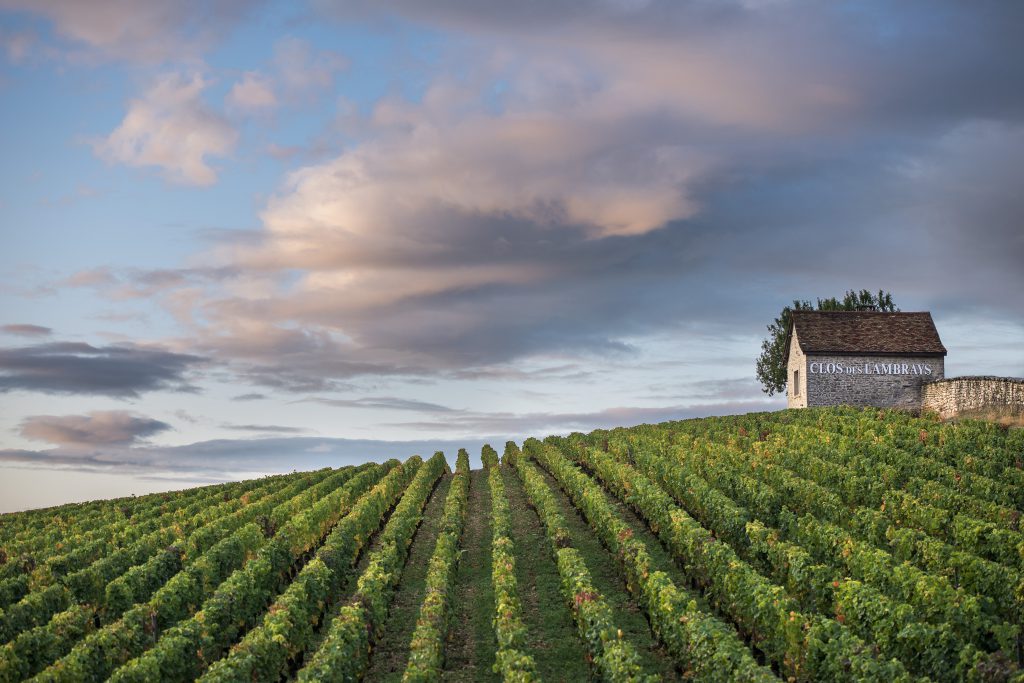
Burgundian estate Domaine des Lambrays has appointed Flint Wines as its ‘key partner’ in the UK to help steer its new strategy in the market.
Flint Wines is not the sole UK agent for the LVMH-owned grand cru as distribution is still shared. Its designation as a ‘key partner’, however, means it will essentially fulfil the functions of an agent; being the lead distributor and primarily responsible for events such as presenting new vintages and having access to the estate’s library collection
Domaine des Lambrays cited Flint’s connections with the UK on-trade as a deciding factor in the producer’s decision to partner with the merchant as it pursues a new strategic focus.
General manager Jacques Devauges, said the domain was entering, “a new chapter in the long and rich history of the Clos des Lambrays”, and a main distributor was vital to help communicate, “the changes currently at play” at the property.
Despite almost owning a monopoly on one of the five grands crus in Morey-St-Denis, the Clos des Lambrays, the domain has not been as wildly successful in the secondary market as some of its peers in the Cote des Nuits.
In 2015, the year following LVMH’s acquisition of the property, Domaine des Lambrays was ranked 59th in the Power 100 list. Its rankings have quietly declined since then, however, and it dropped out of the top 100 entirely in 2018 falling to 162nd in last year’s report.
Although its trade by value has remained fairly robust – enough to warrant inclusion on the Power 100 if that were the only metric – price performance has been its chief undoing, with an average decline of 1.3% across the vintages traded on the Liv-ex Exchange in 2020.
In context, Morey-St-Denis as a whole continues to be one of the more overlooked Burgundian appellations. Last year it accounted for 4.4% of total Burgundian trade by value on Liv-ex and 4.5% of the volume*.
This is despite being a commune with four complete grands crus to its name (Clos de la Roche, Clos St Denis, Clos de Tart and Clos des Lambrays) and part of a fifth (Bonnes Mares, the greater part of which lies in Chambolle-Musigny).
Breaking the grands crus away from their parent AOC, it’s clear that they are the key drivers by value. Clos de la Roche accounted for 42% of Morey-St-Denis’ total trade value in 2020, while Clos des Lambrays was the next biggest at 21%.
Although it is about half the size of Clos de la Roche (8.6ha to Roche’s 16.8ha), Clos des Lambrays was the leading Morey grand cru sold by volume last year, representing 26% of total Morey-St-Denis trade.
Furthermore, although its price performance is varied, with an average trade price of £1,512 per 12×75 it represents a strong value proposition given its status as a Cote des Nuits grand cru.
Perhaps as a result of this, Domaine des Lambrays’ Clos des Lambrays was the second most widely traded Burgundian label by volume on the Exchange in 2020 and continues to be so far in 2021.
The most-traded vintage of Clos des Lambrays this year has been the 2017, which was the worst-performing vintage in 2020.
The glamour of the domain’s new stablemates at LVMH, the likes of Cheval Blanc, Yquem and Colgin Cellars, did not translate into immediate market demand, though changes have been afoot.
In 2019 LVMH appointed Jacques Devauges as the new general manager and winemaker. He had recently left the nearby Clos de Tart, just over a year after it was acquired by Francois Pinault, owner of Chateau Latour and Chateau Grillet among other properties.
A rising talent in Burgundy, Devauges had been the successor to Sylvain Pitiot at Clos de Tart but was in charge for only a brief period from 2015 to 2019 before the property was sold to Pinault who brought in Alessandro Noli from Chateau Grillet.
Devauges’ comment above suggests strongly that viticultural changes at the property look set to be translated into strategic changes into how the domain presents and distributes its wines in key markets in the near future.
The 2019 vintage from the estate is due for release en primeur on 18 March and will be shipped this autumn.
*These figures all exclude Bonnes Mares because it is split between Morey and Chambolle and the greater part is in Chambolle.



